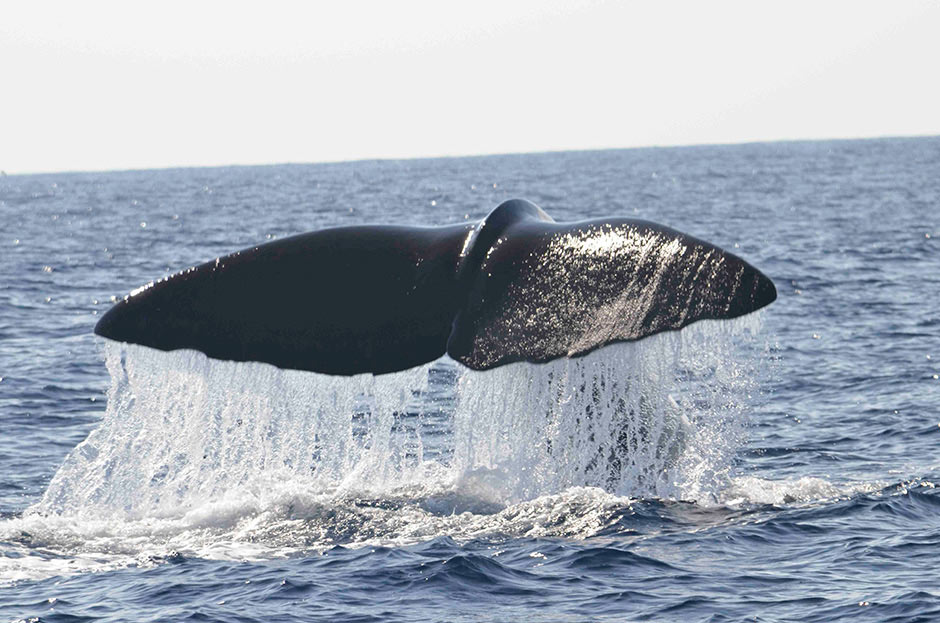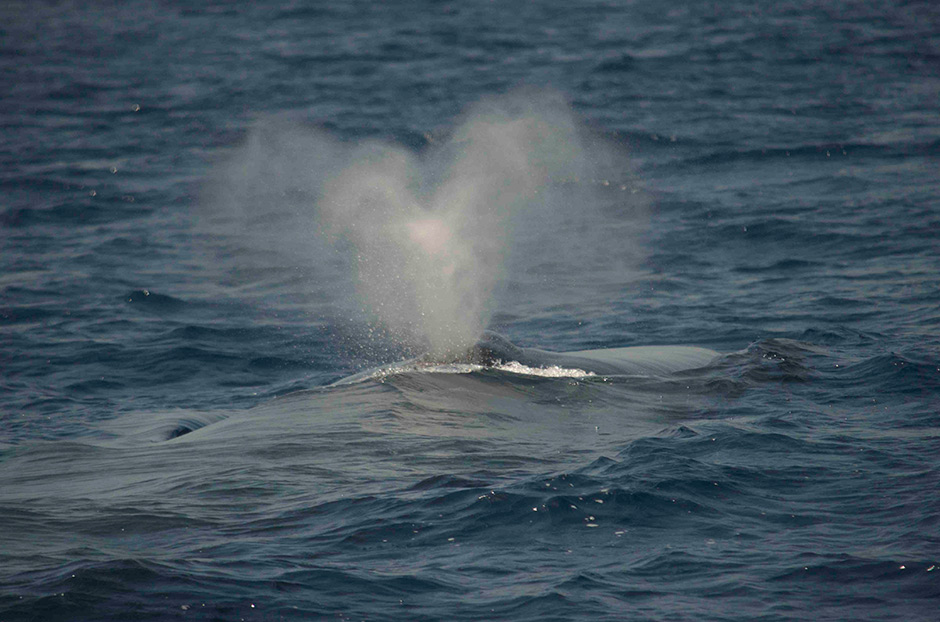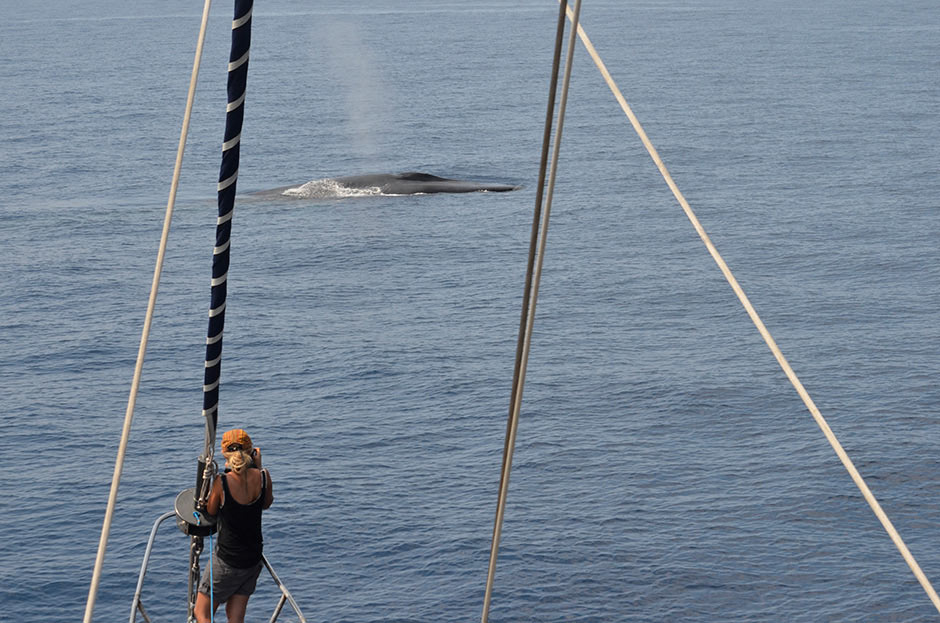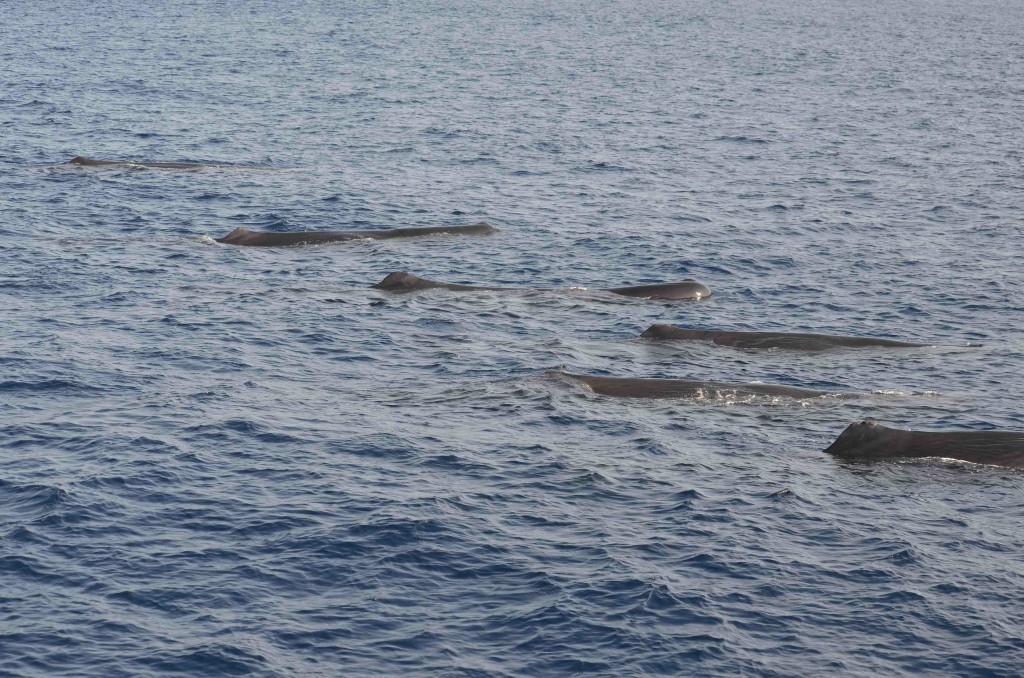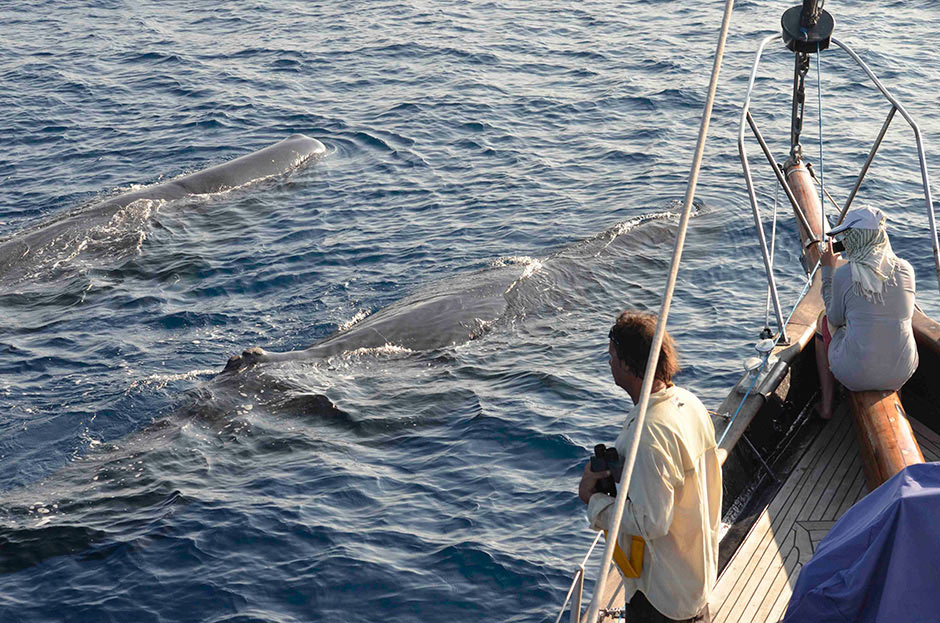The Indian Ocean Marine Mammal Research & Conservation Project, Sri Lanka
In 1979 the International Whaling Commission declared the Indian Ocean (north of 55° S latitude) a Marine Mammal Sanctuary and encouraged international cooperation to protect the populations of great whales in the area. Sri Lanka lies within the sanctuary and is frequented by blue, sperm, humpback, minke and Brydes whales as well as numerous other cetaceans. These dwindling populations are under threat from toxic pollution (mercury, PCB’s and heavy metals), noise pollution, gill net fishing that entangles marine mammals, collision by increasing commercial shipping traffic, starvation due to ingestion of plastic and other garbage, small gene pools, and shifting feeding and migratory patterns due to global warming.
Biosphere Foundation is collaborating with the University of Ruhuna and Captain Raja (whale watching ship, Raja & the Whales). Together we initiated the Indian Ocean Marine Mammal Research Unit in Sri Lanka for basic science, conservation and education. Because the southern coast of Sri Lanka has been identified as an area with a high risk of ship strikes due to the overlap of high densities of blue whales (Balaenoptera musculus) and one of the world’s busiest shipping routes, we began a research program to address the ship-strike issue and arrive at sound conservation initiatives. This Principal Investigator for this project is Russell Leaper who is a Member of the scientific committee of the International Whaling Commission and works with the International Fund for Animal Welfare as a marine mammal scientist.
Together this team, along with other marine mammal experts, have been carrying out research in the southern shipping lanes to assess the distribution of whales and ships, and make recommendations to reduce the number of ship-strikes. Results from these surveys coupled with observations from whale watch boats over a number of years suggests that moving the current Traffic Separation Scheme slightly further offshore would substantially reduce risk of collisions with blue whales. Based on survey data up until April 2015, a 15nm southward shift in shipping traffic would reduce collision risk to blue whales by 95%.
The 2013 data from this study was presented at the IWC in June 2014 and the 2014 field data was presented at the IWC in June 2015. The findings from years 2013 – 2015 were published in Regional Studies in Marine Science. Data collected by Captain Raja during whale-watching tours from 2009 – 2012 has been published in the Journal of Cetacean Research and Management.
To view a slide show presentation by narrator Russell Leaper, please see below. (If you cannot hear the lecture, then please click here to download and view in VLC.)
Watch a video about our life at sea with the great whales (below). The film was made onboard Mir during the 2015 field season. The music is by Tiano & the Dolphins
On behalf of us all, we wish to thank Swire Pacific Offshore, IFAW,
Ward Family Foundation and Kopcho Family Foundation for your support –
as well as all of the local & international collaborators and volunteers.
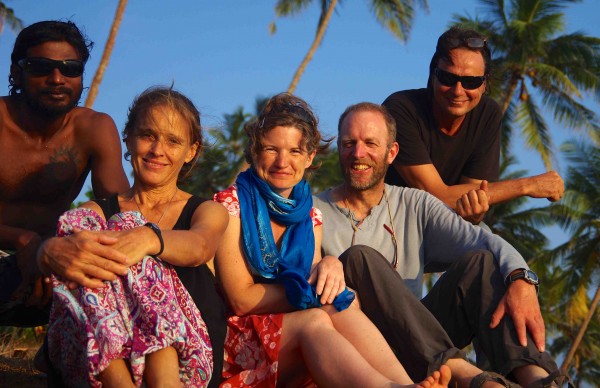
Captain Raja, Abigail Alling, Susie Calderan, Russell Leaper, Mark Van Thillo in Sri Lanka.

